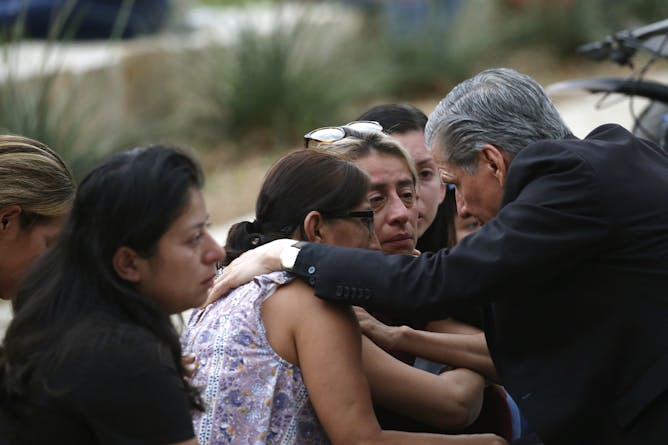|
I remember the Columbine massacre. It was before I was a journalist, but I watched as the news came in of the deadly school shooting with disgust and utter bewilderment. I have clearer memories of what happened at Sandy Hook Elementary School – by then I was a reporter and I spoke to the parents of the young children who were killed. It was the first time in my reporting career that I finished a shift and wept.
I cried again last night. At least 19 children and two adults were killed in another elementary school shooting in the U.S., this time Texas. Columbine was meant to be a watershed, but as criminologists James Densley and Jillian Peterson note, it never was. Instead, the intensity of the school shootings has just gotten worse. Columbine is now only the fourth-worst school shooting – the three above it on the list all occurred in the last decade.
Such is the frequency of this uniquely American problem, that Densley and Peterson have been able to build a database of mass public shootings and with that a profile of the gunmen involved. “Their path to violence involves self-hate and despair turned outward at the world. The key to stopping these tragedies is for society to be alert to these warning signs and act on them immediately,” they write.
Also today:
|

The archbishop of San Antonio, Gustavo Garcia-Siller, comforts families following a deadly school shooting at a school in Uvalde, Texas, on May 24, 2022.
AP Photo/Dario Lopez-Mills
James Densley, Metropolitan State University ; Jillian Peterson, Hamline University
Of the 13 mass school shootings that have taken place in the US, the three most deadly occurred in the last decade. Data from these attacks helped criminologists build a profile of the gunmen.
|
Politics + Society
|
-
Matt Williams, The Conversation
A school shooting in a small Texas town was almost as deadly as the worst such event in US history. Such shootings have increased in frequency over the last few years.
-
Paul J. Becker, University of Dayton; Art Jipson, University of Dayton
The Buffalo mass shooting reignited discussion of replacement theory. This conspiracy isn’t new, but understanding its roots is helpful to understand its connection to extremism.
|
|
Economy + Business
|
-
Tom Lyon, University of Michigan
Sustainable investing’s credibility took a hit when the S&P 500 ESG index dropped the electric vehicle-maker but kept the oil giant. The SEC is considering proposing new disclosure rules.
-
Stephen Bagwell, University of Missouri-St. Louis; Meridith LaVelle, University of Georgia
Corporate pressure campaigns usually work best in partnership with local institutions. While Russia’s civic organizations are generally weak, there are some signs of growing defiance.
|
|
Science + Technology
|
-
James Edward Huchingson, Florida International University
A professor of religion and science explains different views on immortality, from the religious perspective of President Jimmy Carter to the scientific, secular take of Carl Sagan.
|
|
Health + Medicine
|
-
C. Michael White, University of Connecticut
Prescription opiods, stimulants such as those used to treat ADHD and the ingredients found in sexual dysfunction drugs like Viagra are some of the drugs that are being marketed to US consumers.
|
|
Education
|
-
Pamela Renee Conley, Rochester Institute of Technology
Families with deaf children often seek a lot of advice and help, but too rarely find the robust Deaf community in the US full of people with experience and expertise.
|
|